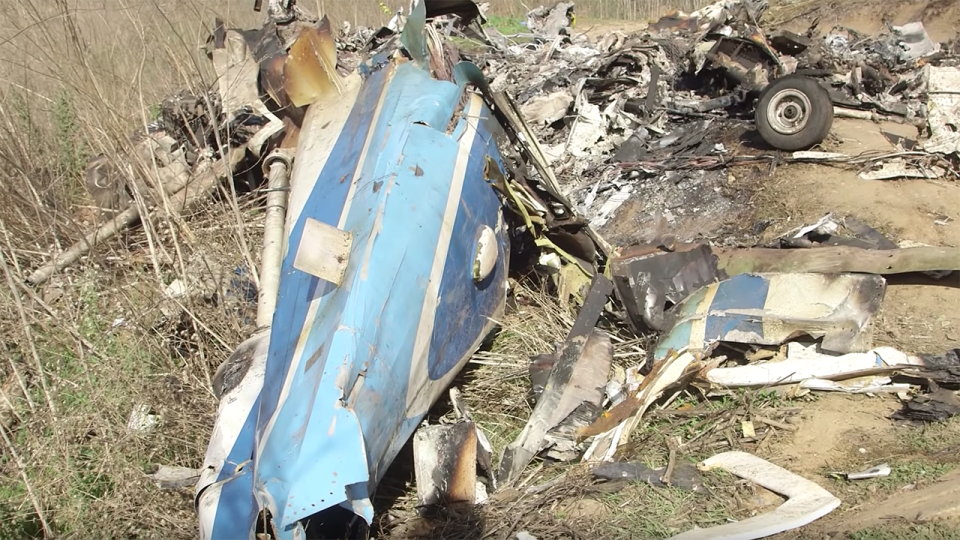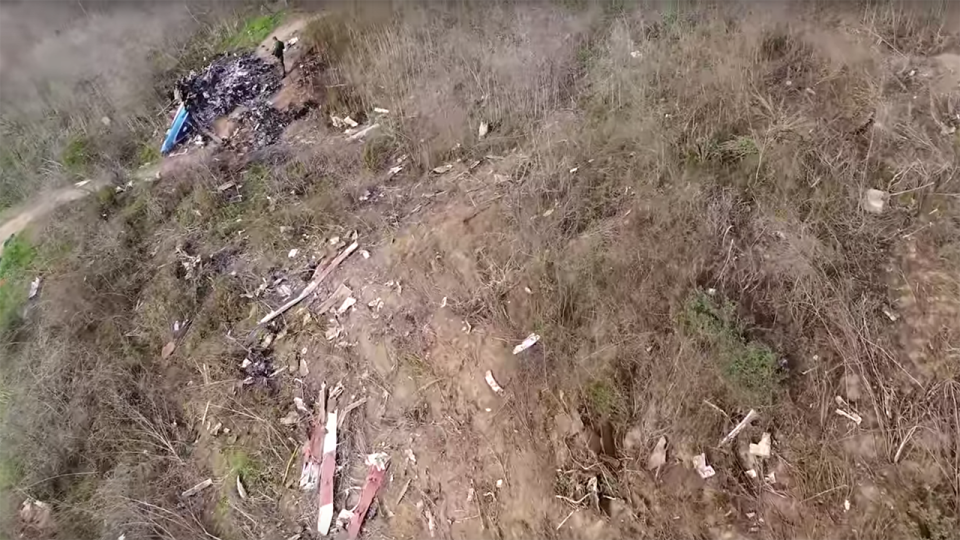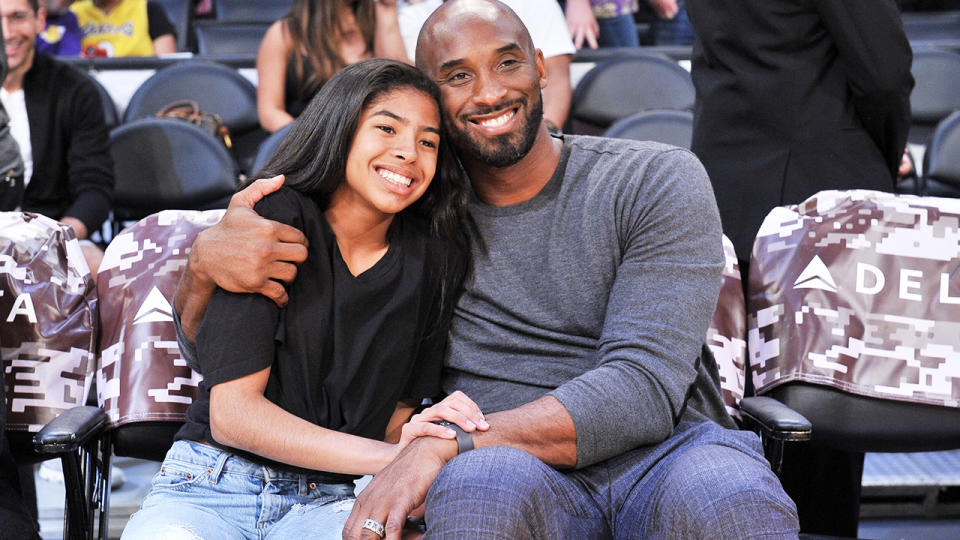Kobe Bryant's body identified as shocking pictures from crash site emerge
The bodies of Kobe Bryant and three other people killed when a helicopter smashed into a foggy Los Angeles-hillside have been identified, the Los Angeles County coroner's office said on Tuesday.
Fingerprints were used to confirm the identity of Bryant, 41, along with John Altobelli, 56; Sarah Chester, 45, and the pilot, 50-year-old Ara Zobayan, the Medical Examiner-Coroner reported.
HAUNTING: Footage of Kobe Bryant's doomed helicopter emerges
‘THEY HAD A DEAL’: Kobe's devastating pact with wife before death
While the department had not yet formally identified five other victims, relatives and acquaintances have identified them as Bryant's 13-year-old daughter, Gianna; Sarah Chester's 13-year-old daughter Payton; Altobelli's wife, Keri, and daughter, Alyssa; and Christina Mauser, a girls' basketball coach at a Southern California elementary school.
The last of the bodies and the wreckage were recovered from the Calabasas hillside on Tuesday, authorities said.
Determining what caused the crash will take months, federal investigators said at an afternoon news conference.

The National Transport Safety Bureau has also released drone footage of the crash site, showing investigators sifting through the wreckage.

Investigators working to determine cause of crash
The helicopter descended for about a minute before crashing. It was traveling at more than 2,000 feet per minute when it hit the ground, “so we know that this was a high-energy impact crash,” but it appeared that the aircraft was in one piece when it struck the ground, NTSB's Jennifer Homendy said.
However, it is too soon to determine whether the pilot was still in control of the aircraft during that descent, she said.
The pilot was well-acquainted with the skies over Los Angeles and accustomed to flying celebrities.
Zobayan had spent thousands of hours ferrying passengers through one of the nation's busiest air spaces and training students how to fly a helicopter. Friends and colleagues described him as skilled, cool and collected, the very qualities you want in a pilot.
His decision to proceed in deteriorating visibility, though, has experts and fellow pilots wondering if he flew beyond the boundaries of good judgment and whether pressure to get his superstar client where he wanted to go played a role in the crash.
Jerry Kidrick, a retired Army colonel who flew helicopters in Iraq and now teaches at Embry-Riddle Aeronautical University in Prescott, Arizona, said there can be pressure to fly VIPs despite poor conditions, a situation he experienced when flying military brass in bad weather.
“The perceived pressure is, 'Man, if I don't go, they're going to find somebody who will fly this thing,’” Kidrick said.

The chartered Sikorsky S-76B plowed into a cloud-shrouded hillside as the retired NBA star was on his way to a youth basketball basketball tournament in which Gianna was playing.
NTSB investigators have said Zobayan asked for and received permission from air traffic controllers to proceed in the fog.
In his last radio transmission before the helicopter went down, he reported that he was climbing to avoid a cloud layer.
Investigators have yet to establish the cause of the crash and have not faulted his decision to press on or explained why he chose to do so.
Randy Waldman, a Los Angeles helicopter flight instructor who viewed tracking data of the flight's path and saw a photo of the dense fog in the area at the time, speculated that Zobayan got disoriented in the clouds, a common danger for pilots.
He said Zobayan should have turned around or landed but may have felt the pressure to reach his destination, an occupational hazard for pilots often referred to as “got-to-get-there-itis” or “get-home-itis.”
“Somebody who's a wealthy celebrity who can afford a helicopter to go places, the reason they take the helicopter is so they can get from A to B quickly with no hassle,” Waldman said.
“Anybody that flies for a living there's sort of an inherent pressure to get the job done because if too many times they go, 'No, I don't think I can fly, the weather's getting bad or it's too windy,' ... they're going to lose their job.”
Homendy said investigators in the crash that killed Bryant will be looking at everything, from the pilot's history and actions to the condition of the helicopter.
“We look at man, machine and the environment,” she said. “And weather is just a small portion of that.”
